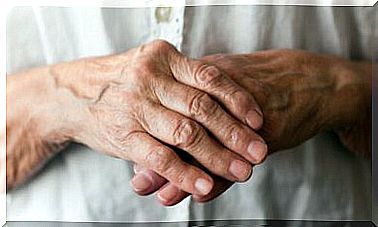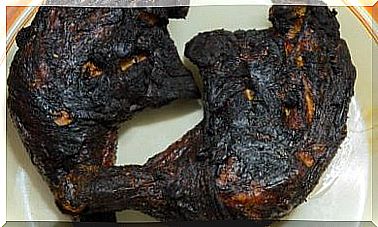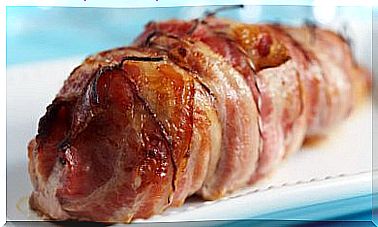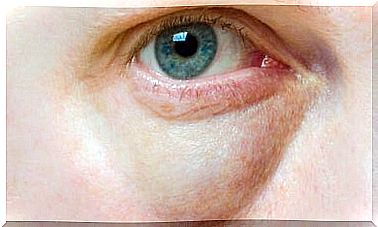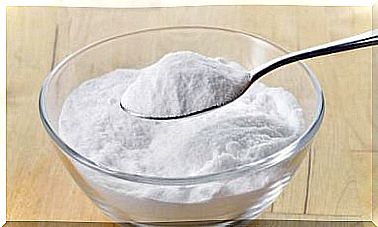Hemorrhoids In Infants And Children: Symptoms, Causes And Treatments
Hemorrhoids or piles cause a lot of discomfort to adults and are an increasingly common problem in children. However, unlike what happens with the elderly, there are very few studies and reports on what happens in pediatric age.
Hemorrhoidal veins are shock absorbers that are part of the anus and rectum from birth. Its function is not fully known. They are thought to be important in continence and defecation.
These structures are made up of connective tissue and venous plexuses. Sometimes, due to various factors that we will review later, they become inflamed and dilated, giving rise to varicose veins or hemorrhoidal disease.
Is it common for children and babies to suffer from hemorrhoids?
Hemorrhoids are a condition considered for adults, with a peak onset between 45 and 65 years. However, hemorrhoidal disease can appear at any age, so children can also be affected.
Any factor that produces an increase in the pressure of the hemorrhoidal veins can lead to symptomatic disease, the most common being the effort made during defecation in case of constipation.
That is why hemorrhoid problems in children usually start from the age of 2, the age when they learn to go to the bathroom and control their sphincters. In any case, newborns can have this condition, although less frequently.
Thus, Kleiner et al. Report a case of a baby who presented visible inflammation of the hemorrhoids due to prolonged abdominal and pelvic pressure during delivery, since he was born breech.
Risk factors for hemorrhoids in children
A study by Yildiz and colleagues found the following to be risk factors for hemorrhoidal disease in children:
- Constipation and chronic constipation.
- Family history of hemorrhoidal disease.
- Use of a European type toilet, since you defecate sitting and not squatting.
- Being male.
Other factors related to hemorrhoids in children are low fiber diet, poor hydration and sedentary lifestyle.
Serious diseases and hemorrhoids in children
An important detail in the presence of hemorrhoids in children is that they can be a sign of something more serious, especially in the smallest.
The existence of a disease that causes increased intra-abdominal pressure, such as portal hypertension, which is the increased pressure in the venous system responsible for much of the blood supply to the liver, should be investigated and ruled out.
On the other hand, in both children and adults, anal discomforts and symptoms are often attributed to hemorrhoids and can delay the diagnosis of other coexisting conditions, including cancer. Consequently, it is recommended to consult the doctor for a careful examination.
Symptoms of hemorrhoids in children
Symptoms frequently described in children are pain with defecation, a visible and palpable swollen lump or mass in the anal region, rectal pain, and difficulty sitting up.
Keep in mind that hemorrhoids do not cause severe or excruciating pain, unless they are imprisoned or thrombosed. Or that there is another associated inflammatory condition, such as a fissure or abscess.
Another common symptom of hemorrhoids in children is the presence of anal mucus along with abdominal pain and itching in the area.
Rectal bleeding is reported in 10% of patients. This is in contrast to what happens in adults, with about 60% reporting it. It is a hemorrhage that is not characterized by being abundant or associated with anemia.
Diagnosis
The diagnosis of hemorrhoidal disease is essentially clinical. It is based on the presence of the previously explained symptoms and on the physical examination, which includes a close inspection of the anal and pelvic region.
Also, an abdominal ultrasound may be helpful in revealing underlying causes for symptomatic hemorrhoids.
Classification of hemorrhoids
The anal canal is divided in two by the dentate or pectineal line. Above the line, towards the rectum, the inner part is covered by reddish rectal mucosa, the nerves of which belong to the autonomic nervous system. Therefore, this part is almost insensitive.
Below the line, towards the outside, the lining is given by the anoderm (skin of the anus, without hairs or sweat glands). In this area, the nerves are very sensitive to painful stimuli.
So, based on their anatomical location, hemorrhoids are classified as follows:
- External: when they are below the dentate line, covered by anoderm.
- Internal: located above the line. These, in turn, are graded according to their outward prolapse, from first degree (with mild inflammation) to fourth degree (fully prolapsed and not reduced).
This classification is used to guide treatment. However, it is incomplete, since it does not take into account other factors that will influence decision-making, such as the size and number of hemorrhoids or the discomfort and pain caused.
Treatment of hemorrhoids in children
There are few studies on the treatment of hemorrhoids in children. Much of the information is carried over from what is done in adults.
The approach has two pillars:
- Determine and treat the cause, be it constipation, diarrhea, or even a serious illness.
- Provide conservative management (non-surgical), with hygienic-dietary measures.
Conservative management includes the intake of abundant fluids, changes in the diet for one that is rich in fiber (fruits, vegetables, cereals, legumes) and sitz baths. It is advisable not to use toilet paper, but to wash gently after bowel movements.
The child should be prevented from resisting the urge to go to the bathroom, sitting on the toilet for a long time (more than 5 minutes) and making great efforts during defecation.
In patients in whom conservative management fails or there are complications, various minimally invasive techniques can be used that cause death of the hemorrhoidal tissue, using bands, a sclerosing substance (sclerotherapy), or photocoagulation.
Among all of them, Watanabe et al. Published a study of sclerotherapy in children with hemorrhoids with a success rate of 86%.
Surgical treatment of hemorrhoids in children
In more severe or symptomatic cases, hemorrhoidectomy or surgical removal of the hemorrhoids may be indicated. Grossmann et al. Reported a successful experience in infants, using a special electrothermal instrument to cut tissues during the procedure.
Possible complications of hemorrhoid surgery include bleeding, infection, and fistula formation. But they did not appear in the aforementioned investigation.
Management of thrombosed hemorrhoids
Meanwhile, when hemorrhoids thrombus (clots form), this causes severe pain. In this case, local measures can be applied to alleviate the discomfort or the thrombus can be removed within the first 48 to 72 hours of the onset of the condition.
After 72 hours, thrombectomy (removal of the thrombus) is not indicated because the discomfort will disappear without intervention in 7 to 10 days.
Hemorrhoids in children are uncomfortable and affect the quality of life
A child or baby with hemorrhoids will see their quality of life diminished, so it is necessary that they receive adequate treatment. You can start a consultation with a pediatrician and then be referred to a specialist in the digestive system to assess the most appropriate approaches.
If it is necessary to intervene surgically, it is best to have exhausted other previous conservative instances. As parents, it is essential that all doubts are resolved in the office.
